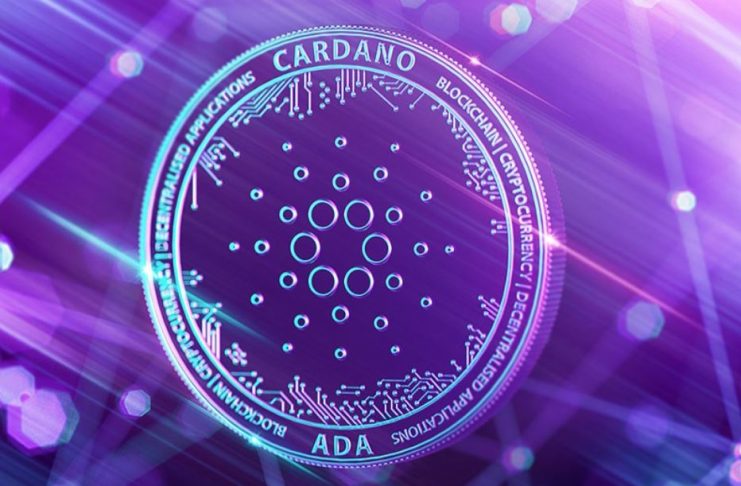Cardano (ADA) soars 37% and regains the 5th position as the biggest crypto in the world.
In addition, Cardano has surpassed Solana in market capitalization and Ethereum in transaction volume.
Cardano is up 37.2% over the past seven days, jumping from $1.12 on Jan. 10 to $1.57 at press time, according to data from CoinMarketCap.
As a result, Cardano overtook Solana in market capitalization and returned to the Top 5 ranking of cryptocurrencies by market capitalization. At this point, ADA has a market capitalization of $50.5 Billion against SOL’s $44.6B, which consolidates a downtrend that started on December 3rd.
Transaction Volume
Boosted by the rise of its native cryptocurrency ADA, the Cardano blockchain even surpassed Ethereum in transaction volume, according to Messari data highlighted by trader and analyst Lark Davis in a post on Twitter. Over 24 hours, Cardano’s transaction volume reached $7 billion against $5.4 billion for Ethereum.
Lower Fees
However, the number that deserves to be highlighted and demonstrates that Cardano can present itself as a real and exciting alternative to investors is that Cardano users paid $66,058 in transaction fees. At the same time, Ethereum spent a staggering $44.7 million in fees, according to Messari data.
DApps in action
While critics tend to refer to Cardano as a “ghost network,” with a few dApps running on the network, such as stable coin hub Ardana, decentralized exchange Maladex, decentralized banking protocol MELD, and NFTs marketplace CNFT.IO, additionally, decentralized exchange SundaeSwap recently announced that it would go live on Cardano’s mainnet this Thursday.
Sunda Swap Writes:
“The moment we’ve all been waiting for has finally come! We’re excited and proud to share that SundaeSwap and the ISO will be launching on the evening of Thursday, January 20th (EST).”
John Woods, Cardano’s director of software architecture at Input Output, also recently stated that a “huge” number of projects are in an advanced stage of development and about to be released that will make the network ecosystem more functional and robust.
Scalability
A recent blog post by IOHK presents the network developers’ plans to increase the network’s scalability efficiently.
Among the attributes under development are increased block size, memory/CPU parameters improvements for the Plutus smart contract platform, node enhancements, disk storage space, implementation of sidechains, and Hydra, a second-tier solution from Cardano and other resources.
Cardano blockchain block size was recently increased from 8KB to 72KB (an increase of 12.5%). Further improvements will be implemented over time, according to IOHK, based on ongoing monitoring of the system and overall network health.
Milkomeda and Mamba are two Ethereum Virtual Machine (EVM) compatible sidechains scheduled to be deployed on the network in the future, allowing the use of dApps originally built on Ethereum to run on the Cardano blockchain.
Metaverse
Last week, Cardano’s first project dedicated to the metaverse was officially launched. Pavia is similar to The Sandbox and Decentraland projects, based on the commercialization of virtual lands so that users and brands can build personalized experiences in immersive virtual environments.
So far, the project has minted 100,000 “land parcels” in the form of non-fungible tokens (NFTs). More than 60% of the land was negotiated in two initial sales rounds in October and November last year. The rest should be sold in the first quarter of this year.
According to the project’s official website, Pavia has more than 8,300 landowners. For now, however, it is not yet possible to make any use of the lands, as the developers are still working on the gameplay and experience features of the platform.
Like The Sandbox and Decentraland, Pavia also has a native token – PAVIA – that will serve to drive the game’s economy. The token was launched in December, and 25% of the supply was distributed to landowners through an airdrop.
According to a post from the Pavia team on Twitter, the base price of virtual land on the platform is $450, and the most expensive land sold for $88,740. The values still put Pavia far below the volume moved by The Sandbox or Decentraland.
However, as the developers point out on the project’s official website, “the metaverse is in its infancy, and Pavia is at an early stage of development.”
There are also play-to-earn game projects under development by the Cardano community, pointing to good prospects for diversifying the use of the ecosystem throughout 2022.
DisClamier: This content is informational and should not be considered financial advice. The views expressed in this article may include the author's personal opinions and do not reflect The Crypto Basic opinion. Readers are encouraged to do thorough research before making any investment decisions. The Crypto Basic is not responsible for any financial losses.


